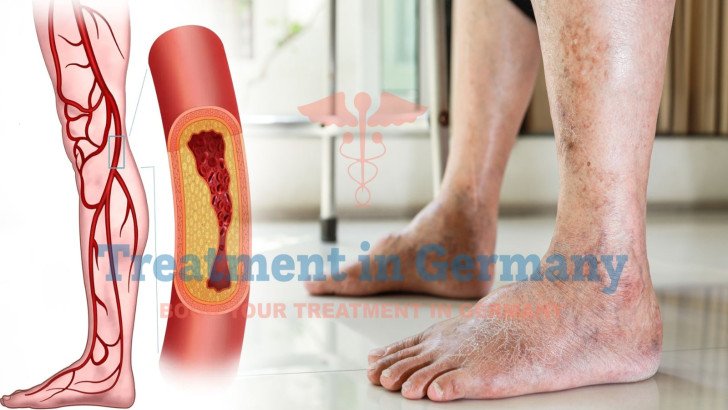
PAD is a collection of plaque (fat and cholesterol) that narrows the arteries in your legs or arms.
Peripheral Artery Disease (PAD) Treatment in Germany
Peripheral Artery Disease (PAD) is a widespread vascular disorder that affects millions of people around the globe. This, also referred to as peripheral vascular disease, is a health complication characterized by blockage of blood vessels mostly in the legs.
Most cases of PAD are attributable to atherosclerosis, the accumulation of fatty deposits within the cell walls of arteries, thereby causing arterial stenosis or occlusion.
Understanding Advanced PAD Treatment Options
PAD treatment in Germany consists of a variety of the latest invasive techniques aimed at enhancing blood circulation and relieving pain. They are not conventional treatments and provide hope to patients who have not had much hope for their treatment.
Some of the advanced treatment options available in Germany include:
Why Choose Germany for PAD Treatment?
Germany has become acknowledged as one of the most successful medical tourism destinations, especially regarding the deflisting facility. There are several compelling reasons to consider Germany for advanced PAD treatment:
Top German Medical Centers for PAD Treatment
Some of the leading medical centers in Germany are the best when it comes to the treatment of peripheral disease. Some of the top institutions include:
However, these not only provide advanced therapies, they are also key players in the development of new remedies and advancements in PAD.
Modern Approaches towards PAD Treatment in Germany
Currently, Germany’s medical centres occupy the leadership position in terms of introducing and applying novel approaches to pad treatment.
Some of the groundbreaking approaches include:
Hybrid Procedures
Simultaneous use of open surgical and endovascular methods to treat different arterial lesions in the course of the same procedure.
Bioresorbable Vascular Scaffolds
Bioresorbable stents that degrade to eliminate the effects that permanent stents have on patients’ bodies.
Drug-Coated Balloons
Balloon angioplasty catheter surfaces, which inhibit restenosis after the treatment process.
Intravascular Lithotripsy
Liberating them with sound waves to reduce the buildup of calcified plaque in arteries that are severely constricted.
Genetics-Based Therapies
Genomic therapies for patient-diagnosed genetic marks in order to address the root causes of PAD.
These advanced approaches provide new ways to help individuals with critical PAD, especially those who, after class III revascularization interventions, still suffer from the disease.
Patient Experience and Recovery
Undergoing advanced PAD treatment in Germany typically involves a comprehensive patient journey.
Following therapy in Germany, a growing number of patients report experiencing periods of alleviation from ailments like leg pain while active or from their everyday lives in general.
Preparing for PAD Treatment in Germany
If you're considering advanced PAD treatment in Germany, here are some steps to help you prepare:
Kindly complete the form below, and our dedicated team will reach out to you promptly. We look forward to connecting with you soon!
Trierer Straße, 56072 Koblenz, Germany
.webp)
.webp)
 (1).webp)
 (1).webp)

.webp)
.webp)
 (1).webp)
 (1).webp)
